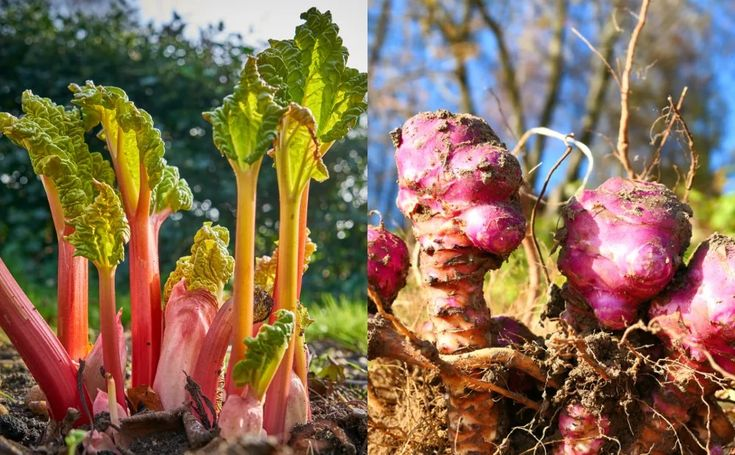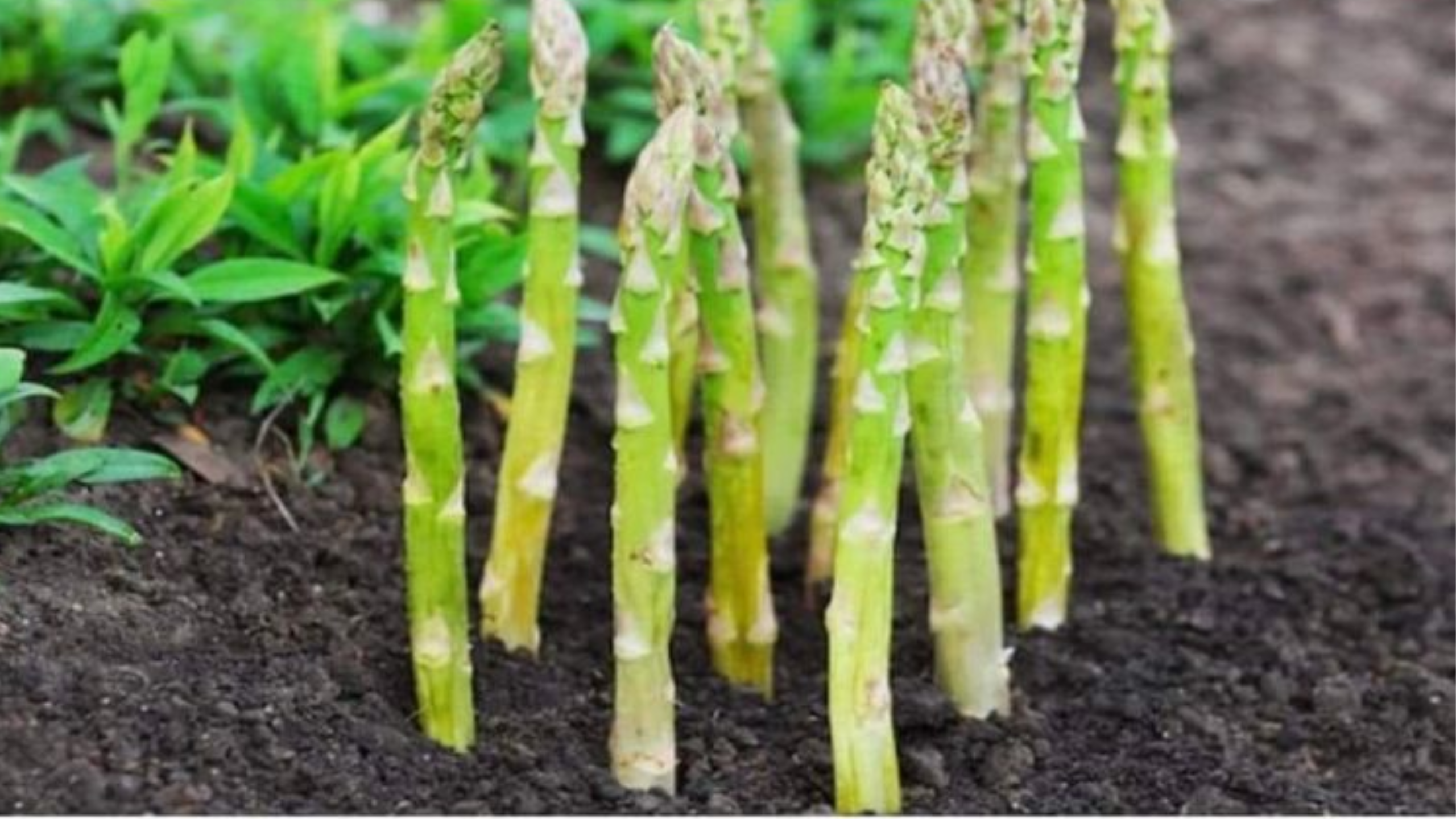Imagine a garden that keeps on giving—year after year, without the need to replant. That’s the magic of perennial vegetables. These hardy plants return season after season, offering delicious, nutrient-rich harvests with minimal effort once established. Perfect for gardeners who want to save time and enjoy a more sustainable lifestyle, perennial veggies are an excellent investment in your edible landscape.
Here are 12 top perennial vegetables that provide continuous abundance with just one planting.
1️⃣ Asparagus (Asparagus officinalis)
Asparagus is a springtime favorite, producing tender, flavorful spears that are rich in fiber and antioxidants. Once your asparagus bed is established (typically after 2–3 years), it can produce for 20 years or more! Choose a sunny, well-drained spot and be patient—it’s worth the wait.
2️⃣ Rhubarb (Rheum rhabarbarum)
This cold-hardy perennial thrives in cooler climates. Its tart red stalks are perfect for pies, jams, and compotes. Avoid eating the leaves, which are toxic, and instead focus on harvesting the stalks each spring and early summer. Rhubarb plants can remain productive for up to 10 years or longer.
3️⃣ Artichoke (Cynara cardunculus)
A showstopper in both the kitchen and garden, artichokes produce large, edible flower buds. In warmer climates, they grow as perennials and yield year after year. For colder zones, consider growing them as annuals or protect them over winter with heavy mulch.
4️⃣ Horseradish (Armoracia rusticana)
With its spicy kick, horseradish root adds flavor to sauces and meats. It spreads rapidly, so plant it in a dedicated bed or large container to avoid taking over your garden. Once established, you can harvest roots every fall for years to come.
5️⃣ Jerusalem Artichoke (Helianthus tuberosus)
Also called sunchokes, these sunflower relatives produce knobby, sweet, and nutty tubers. Easy to grow, they can become invasive, so it’s best to plant them in a controlled area. Harvest the tubers in late fall for soups, roasts, or raw snacks.
6️⃣ Lovage (Levisticum officinale)
Often compared to celery, lovage is a tall, leafy herb with a robust flavor. Use the leaves, stalks, and seeds in cooking. It’s a low-maintenance perennial that thrives in rich, moist soil and partial shade.
7️⃣ Walking Onion (Allium proliferum)
This quirky plant “walks” across your garden by producing bulb clusters at the tops of its stalks that eventually fall and replant themselves. You’ll get a constant supply of green onions and small bulbs, making it a fun and functional addition to any edible garden.
8️⃣ Sorrel (Rumex acetosa)

With its lemony tang, sorrel adds a zing to soups, salads, and sauces. It’s one of the first greens to appear in spring and will keep producing tender leaves well into fall. Keep harvesting regularly to encourage fresh growth.
9️⃣ Chinese Artichoke (Stachys affinis)
These small, knobby tubers have a unique spiral shape and crisp texture. Known as crosnes, they’re often sautéed, stir-fried, or pickled. Chinese artichokes prefer loose, well-drained soil and can be harvested late in the growing season.
🔟 Good King Henry (Chenopodium bonus-henricus)
This heirloom European vegetable is related to spinach and can be used in similar ways. It produces edible shoots and leaves, and it’s easy to grow in poor soils. With continuous harvesting, it becomes more productive each year.
1️⃣1️⃣ Sea Kale (Crambe maritima)
Sea kale is a resilient coastal plant that grows well in sandy, salty soils. The young shoots can be blanched and eaten like asparagus, while the leaves and flowers are also edible. Once established, it’s a low-maintenance, reliable producer.
1️⃣2️⃣ Perennial Kale (Brassica oleracea var.)
Unlike annual kale, perennial varieties—like ‘Daubenton’ or ‘Taunton Deane’—keep producing leafy greens all year, even in frost. With regular pruning, your plant will stay vigorous and keep giving you nutrient-packed leaves for soups, salads, and smoothies.
🌿 Why Choose Perennial Vegetables?
- Low maintenance: Once established, these plants require less water, fertilizer, and care.
- Sustainable: No tilling or replanting means healthier soil and fewer resources used.
- Cost-effective: One planting yields food for years, reducing the need for yearly seeds.
- Biodiversity: Many perennial vegetables support pollinators and improve your garden’s ecosystem.
🌼 Tips for Success
- Give each perennial vegetable the right space and soil conditions—they’ll be around for a while!
- Use mulch to retain moisture and suppress weeds.
- Divide or thin your plants every few years to keep them productive.
- Learn the harvest window for each veggie to ensure flavor and regrowth.
Start incorporating some of these perennial stars into your garden, and enjoy a more sustainable, low-effort harvest season after season.
Plant once, and let nature do the rest. Your future self (and dinner plate) will thank you! 🌿🥦🍽️

